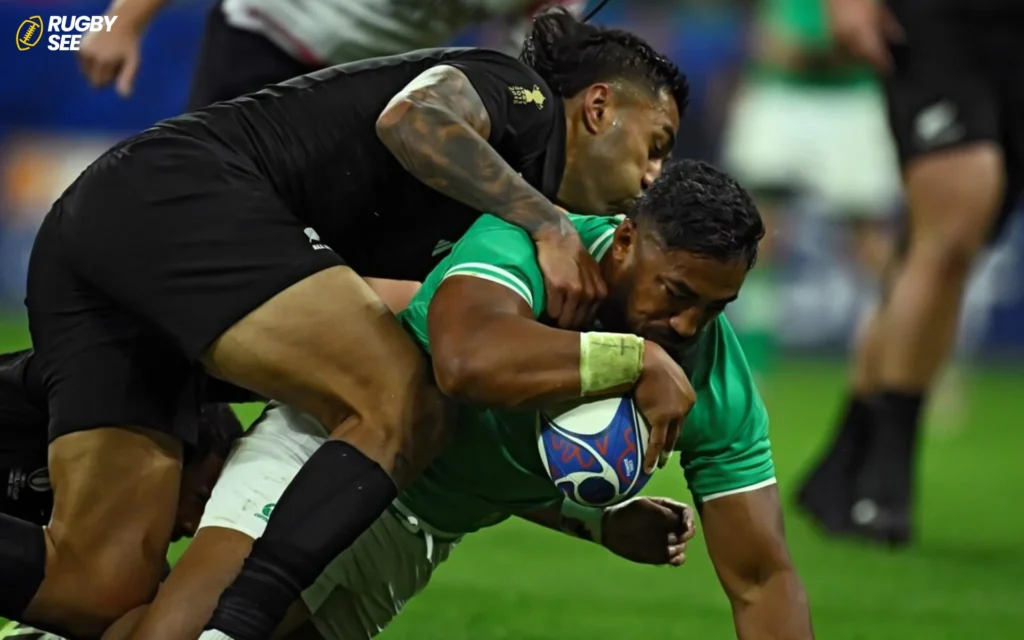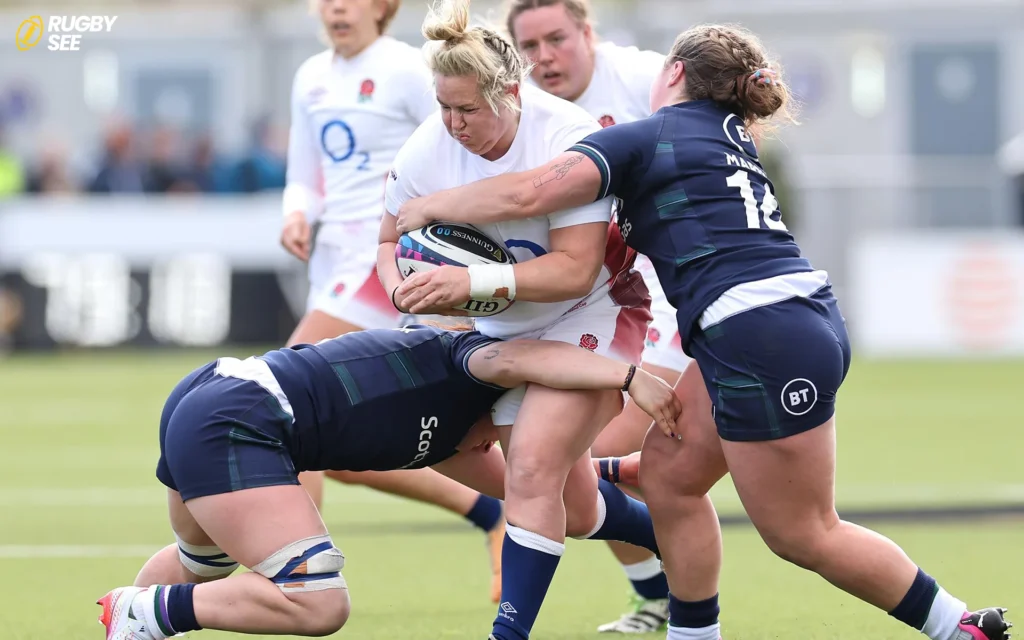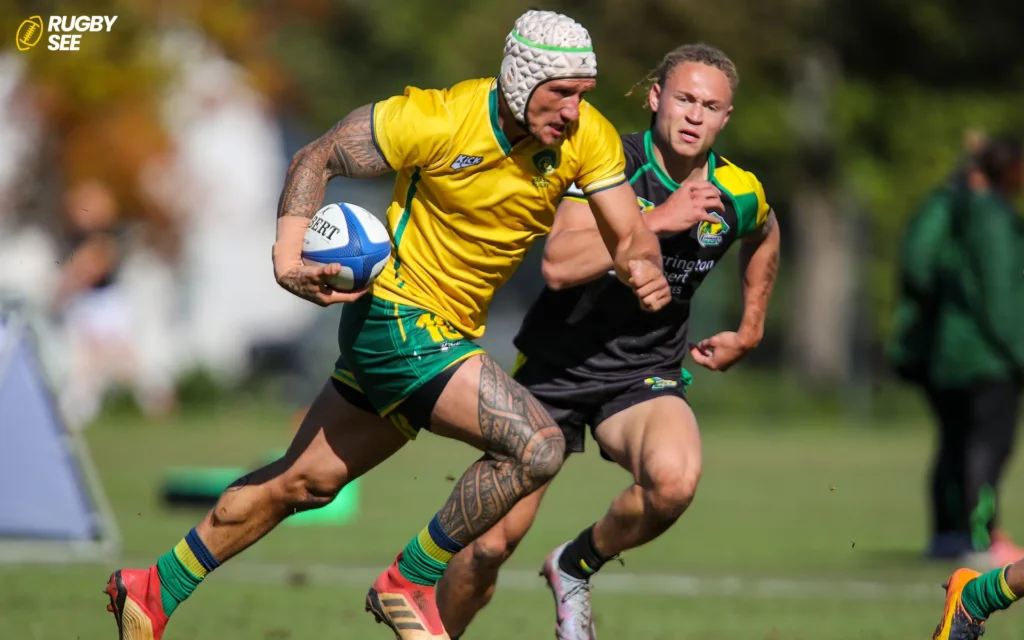Rugby, a sport known for its intense physicality and strategic complexity, demands not only skill and strength but also the right gear to perform effectively. Among the most critical pieces of equipment for any rugby player are their cleats, also known as boots. The right type of cleats can enhance a player’s performance, provide essential traction, and help prevent injuries on the field. In this guide, we will explore the different types of rugby cleats available, their features, and how to choose the best pair for your playing needs.
Understanding Rugby Cleats
Rugby cleats are designed to handle the rugged demands of the game, which includes running, kicking, and physical contact across various playing surfaces. The design and build of rugby cleats focus on providing stability, support, and protection. Here are some key features that distinguish rugby cleats:
- Stud Configuration: Rugby cleats typically feature a mixture of blade and conical studs. The configuration and number of studs can vary depending on the boot’s purpose and the playing surface. Forwards usually wear boots with eight studs for increased traction during scrums, while backs may opt for cleats with six studs for better speed and agility.
- Materials: Durability is crucial, so rugby cleats are often made from robust materials that can withstand muddy, wet, and abrasive conditions. Leather was traditionally favored for its durability and fit, but modern cleats are frequently made from synthetic materials that offer lighter weight and better water resistance.
- Cut and Fit: Rugby boots come in low-cut and mid-cut styles. Low-cut boots are lighter and allow for maximum agility, suitable for backs. Mid-cut styles offer more ankle support and are often chosen by forwards who need extra stability and if you want to know about break Time in Rugby read Do rugby games have a break?
Types of Rugby Cleats Based on Playing Conditions
Rugby cleats are also categorized based on the type of playing field conditions:
- Soft Ground (SG) Cleats: Designed for wet and muddy conditions, SG cleats have longer, usually metal, removable studs for optimal traction on soft or slippery surfaces.
- Hard Ground (HG) Cleats: These cleats are for harder, drier surfaces and feature a larger number of shorter studs made of rubber or plastic to provide a balance between traction and comfort.
- Artificial Ground (AG) Cleats: Specifically designed for synthetic turf, AG cleats have numerous short studs to distribute pressure evenly and reduce the risk of injury on harder artificial surfaces.

Choosing the Right Cleats for Your Position
The position you play significantly influences the type of cleats you should choose:
- Forwards (Props, Hookers, Locks, Flankers, Number Eight): Because forwards are involved in pushing in scrums and need extra stability, they generally opt for cleats with eight studs and robust construction to endure the physical demands of their roles.
- Backs (Scrum Halves, Fly Halves, Centers, Wings, Fullbacks): Backs benefit from lighter, more flexible cleats with fewer studs (usually six) to enhance speed and agility. These players need cleats that allow quick, sharp movements.
Tips for Buying Rugby Cleats
- Fit is Paramount: Ensure your cleats fit snugly without being too tight. There should be about a thumb’s width between the front of the cleat and your longest toe. This space prevents your toes from hitting the tip during quick stops or directional changes.
- Consider the Closure System: Laces are traditional, but some models offer variations for a more secure fit or ease of use. Ensure whatever system the cleat has, it keeps your foot stable without discomfort.
- Invest in Quality: Opt for brands known for durability and performance. High-quality cleats might come at a higher price point but considering the rough nature of rugby, investing in a durable pair of cleats is cost-effective in the long run.
- Test Different Brands: Each brand fits slightly differently, and what works for one player might not suit another. Try different brands and models to find the one that fits best with your foot shape and playing style.
Maintaining Your Rugby Cleats for Optimal Performance
Maintaining your rugby cleats is just as important as selecting the right pair. Proper care extends their lifespan and ensures they continue to provide the best performance. Here are some essential maintenance tips:
- Regular Cleaning: Post-match, remove mud and debris using a soft brush. If necessary, wash them with a mild detergent and warm water, but avoid soaking them as this can damage the material and affect the studs.
- Dry Properly: After cleaning, let your cleats air dry naturally away from direct heat sources like radiators or sunlight. Excessive heat can deform the boots and weaken the materials.
- Check and Replace Studs: Regularly check the condition of your studs, especially if they are removable. Replace worn or damaged studs to maintain traction and safety.
- Store Correctly: Keep your cleats in a cool, dry place where they can breathe. Avoid storing them in your bag for extended periods, which can promote bacteria growth and odor.

Advanced Features in Modern Rugby Cleats
Technology continues to revolutionize how rugby cleats are designed. Manufacturers are incorporating advanced materials and innovative designs to enhance player performance. Some notable features include:
- Weight Reduction Technologies: New synthetic materials are being used to reduce the weight of the cleats, helping players increase their speed without sacrificing durability.
- Enhanced Ankle Support: Some newer models offer enhanced ankle support without additional bulk, providing stability and protection, particularly for players in scrummaging positions.
- Improved Stud Layouts: Innovations in stud configurations are designed to optimize traction and provide stability specific to the movements in rugby, such as pivoting and lateral cuts.
- Water-Resistant Coatings: Many modern cleats feature water-resistant treatments to keep feet dry in wet conditions, improving comfort and playability.
The Role of Personal Preference in Choosing Rugby Cleats
While practical considerations are paramount, personal preference also plays a significant role in selecting rugby cleats. Some players may prioritize comfort over all else, while others might look for cleats that offer the best agility or aesthetic appeal. Here are some factors where personal preference influences cleat choice:
- Color and Design: Many players choose cleats based on their team colors or personal style preferences. While aesthetics should not be the primary deciding factor, wearing cleats that you find visually appealing can boost your confidence on the field.
- Brand Loyalty: Some players have brand preferences based on past positive experiences. If a particular brand’s cleats have consistently offered comfort and durability, players are likely to stick with that brand.
- Feedback from Peers: Recommendations from teammates or coaches can also influence cleat choices. Experienced players can provide insights on the performance of different cleat types and brands in real-world conditions.

Conclusion
Choosing the right type of cleats is crucial for any rugby player, and involves a careful consideration of playing position, field conditions, and personal preferences. By understanding the different types available and how they match up to your needs, you can make an informed decision that enhances your performance and enjoyment of the game. Remember, the best cleats for you are those that not only fit well and meet the demands of your playing style but also align with your personal preferences and aesthetic choices. With the right pair, you’ll be ready to tackle the challenges of the rugby field with confidence and skill and if you want to know about downs in Rugby read does rugby have downs?
The type of cleats rugby players wear is crucial to their performance on the field. Players should choose their cleats based on their position, playing surface, and personal comfort. Whether you are a forward looking for stability and traction or a back seeking agility and speed, the right rugby cleats are out there for you. Always remember to prioritize quality, fit, and suitability for your specific role and conditions. With the right pair of cleats, you can focus on the game, confident that your footwear will support your every move.










